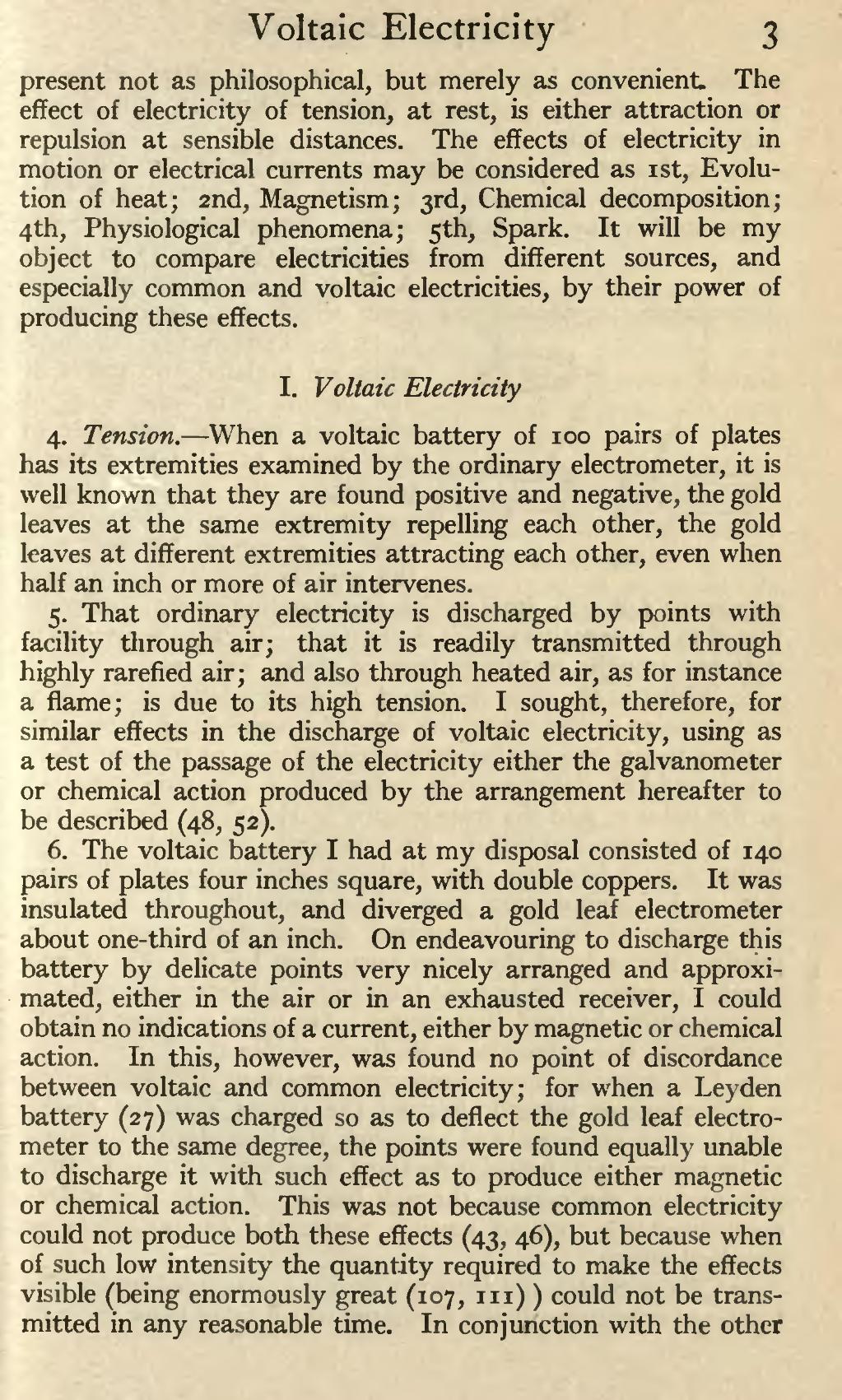present not as philosophical, but merely as convenient. The effect of electricity of tension, at rest, is either attraction or repulsion at sensible distances. The effects of electricity in motion or electrical currents may be considered as 1st, Evolution of heat; 2nd, Magnetism; 3rd, Chemical decomposition; 4th, Physiological phenomena; 5th, Spark. It will be my object to compare electricities from different sources, and especially common and voltaic electricities, by their power of producing these effects.
I. Voltaic Electricity
4. Tension.—When a voltaic battery of 100 pairs of plates has its extremities examined by the ordinary electrometer, it is well known that they are found positive and negative, the gold leaves at the same extremity repelling each other, the gold leaves at different extremities attracting each other, even when half an inch or more of air intervenes.
5. That ordinary electricity is discharged by points with facility through air; that it is readily transmitted through highly rarefied air; and also through heated air, as for instance a flame; is due to its high tension. I sought, therefore, for similar effects in the discharge of voltaic electricity, using as a test of the passage of the electricity either the galvanometer or chemical action produced by the arrangement hereafter to be described (48, 52).
6. The voltaic battery I had at my disposal consisted of 140 pairs of plates four inches square, with double coppers. It was insulated throughout, and diverged a gold leaf electrometer about one-third of an inch. On endeavouring to discharge this battery by delicate points very nicely arranged and approximated, either in the air or in an exhausted receiver, I could obtain no indications of a current, either by magnetic or chemical action. In this, however, was found no point of discordance between voltaic and common electricity; for when a Leyden battery (27) was charged so as to deflect the gold leaf electrometer to the same degree, the points were found equally unable to discharge it with such effect as to produce either magnetic or chemical action. This was not because common electricity could not produce both these effects (43, 46), but because when of such low intensity the quantity required to make the effects visible (being enormously great (107, 111)) could not be transmitted in any reasonable time. In conjunction with the other
